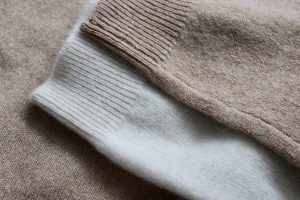When the cold season sets in, warm clothes become a necessity. While layering is important, you can still look stylish if you choose quality clothes from renowned brands. For example, men’s cashmere jumpers can be a good pick if you are looking for knitwear that will not affect your comfort. Men’s cashmere sweaters come in different designs, including V-necks, roll necks, round necks, zipped turtlenecks and many more. You can also choose the thickness you want for your sweater. This will cover the top facts you need to know about cashmere.
What is Cashmere?
Cashmere is a unique type of yarn that comes from the undercoat of cashmere goats. The outer layer prevents water from getting to the undercoat, made of ultra-fine hairs for strong heat insulation. The mechanism keeps the goats cool in the summer and warm in winter. Thanks to their double fleece, you will only find these goats in China and Mongolia as they can survive the wide temperature changes between seasons in these areas.
The Production of Cashmere
After the hair is collected from the goats, it goes through various processing stages to give it its quality colour and texture. The first stage is where the fibres are dyed and spun into yarns. The garment industries will then buy the yarns and knit them into jumpers and other cold-season clothes. The companies can also turn the fibres into fabrics that they use to make premium suits.
Due to the complicated production process, the scarcity of raw material (goats’ hair), and the material’s durability, most cashmere products are expensive. For example, since a cashmere goat produces 150 grams of fibre each year and you will need approximately 300grams to make one jumper, you will have to shave two goats after a year to make a single jumper. With only 6000 tonnes of cashmere produced every year, the material is just a small fraction compared to the amount of wool produced worldwide.
Is Cashmere Better than Wool
Apart from being the finest, softest and warmest, the material has numerous advantages over typical wool. Below are some of the benefits.
- Warmth: The insulation provided by cashmere garments is up to three times than wool, or higher for first grade cashmere.
- Softness: Cashmere has a very fine texture, thanks to its thin fibres.
- Shape resilience: Cashmere garments rarely shrink after wash. They will also retain their shape for years. However, you have to follow the provided washing instructions
- No itchiness: Since cashmere is lighter than wool, its texture is not scratchy, meaning you can wear a cashmere product directly on the skin.
- Lightness: Cashmere products are always lighter than wool, plus you can wear fewer layers, thanks to its insulating qualities.
- Durability: Products made of high-quality cashmere are always durable.
Differentiating Great and Poor Quality Cashmere
IF it is your first time buying cashmere clothes, it can be challenging to differentiate between high-quality and poor quality cashmere when in the store. However, you will notice the difference after wearing and washing the product. Below are some ways you can differentiate great cashmere products from substandard ones.
The first thing you should check when buying cashmere is the brand. Some brands only use the name for marketing their products or using a poor blend between wool and cashmere. While these products are cheaper, buyers don’t get value for their money as they have poor quality and feel.
If you are looking for the best feel and durability, the best cashmere product is that made of 100% cashmere. A product made of high-quality cashmere is a good investment as it will last for a long time and keep you warm without extra weight. You can check the following properties to identify the quality of a cashmere product.
- Length of fibres: Since the quality of fibres depends on their length and thickness, it is advisable to look for a sweater with long fibres, especially around the neck and underbelly regions.
- The fibres’ origin: Since temperature variation is what makes cashmere goats produce fine and soft fibre, the best fibre will be from goats that live in areas where the variation is higher. Good examples include China and inner Mongolia.
- The fibres’ thickness: The thickness of cashmere fibres have a huge impact on the softness of the final products. Yarns with lower thickness are softer, making them the best for both baby and adult winter clothes.To determine whether a cashmere sweater is soft, you can touch it to feel its texture or place it on your skin to feel if it is itchy or not
Parting Words
Cashmere is one of the best materials for winter clothes, thanks to its softness, lightness and durability. However, the products are more expensive due to the rarity of the raw material and the challenging production process. The tips above will help you choose the best quality cashmere products to enjoy their benefits.

